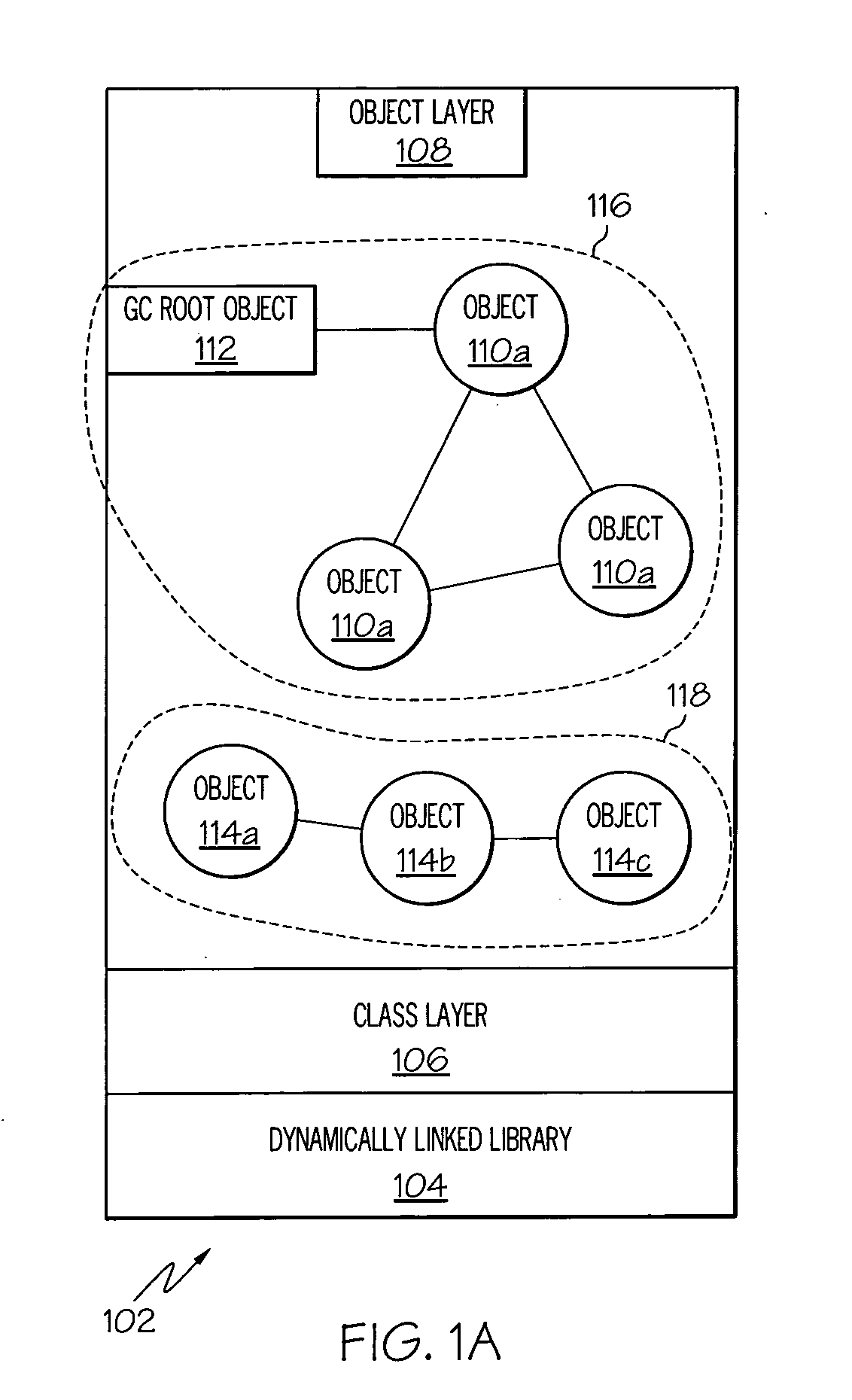Attributing memory usage by individual software components
a software component and memory usage technology, applied in the computer field, can solve the problems of not being able to identify which objects are consuming memory, unable to diagnose memory performance problems, and unable to accurately measure the amount of memory used,
- Summary
- Abstract
- Description
- Claims
- Application Information
AI Technical Summary
Benefits of technology
Problems solved by technology
Method used
Image
Examples
Embodiment Construction
[0016] The present invention presents a method, system, and computer-readable medium for attributing space in a memory heap to particular components within a large software system that have objects that are in the memory heap. The objects are sampled, preferably in a snapshot graphical image. This snapshots presents properties of both the objects as well as their topology. Identifying these properties, through the use of filters, allows the identification of a particular component or type of component, thus enabling a computer system to attribute the objects to the particular component or type of component. If a particular component or type of component is determined to be utilizing an excessive amount of space in the memory heap, then an alert is issued, allowing a software administrator to take corrective steps, such as rewriting application code, modifying memory allocation / paging procedures, etc.
[0017] In one embodiment, a sampling approach is used to inspect the memory heap. P...
PUM
 Login to View More
Login to View More Abstract
Description
Claims
Application Information
 Login to View More
Login to View More - R&D
- Intellectual Property
- Life Sciences
- Materials
- Tech Scout
- Unparalleled Data Quality
- Higher Quality Content
- 60% Fewer Hallucinations
Browse by: Latest US Patents, China's latest patents, Technical Efficacy Thesaurus, Application Domain, Technology Topic, Popular Technical Reports.
© 2025 PatSnap. All rights reserved.Legal|Privacy policy|Modern Slavery Act Transparency Statement|Sitemap|About US| Contact US: help@patsnap.com



